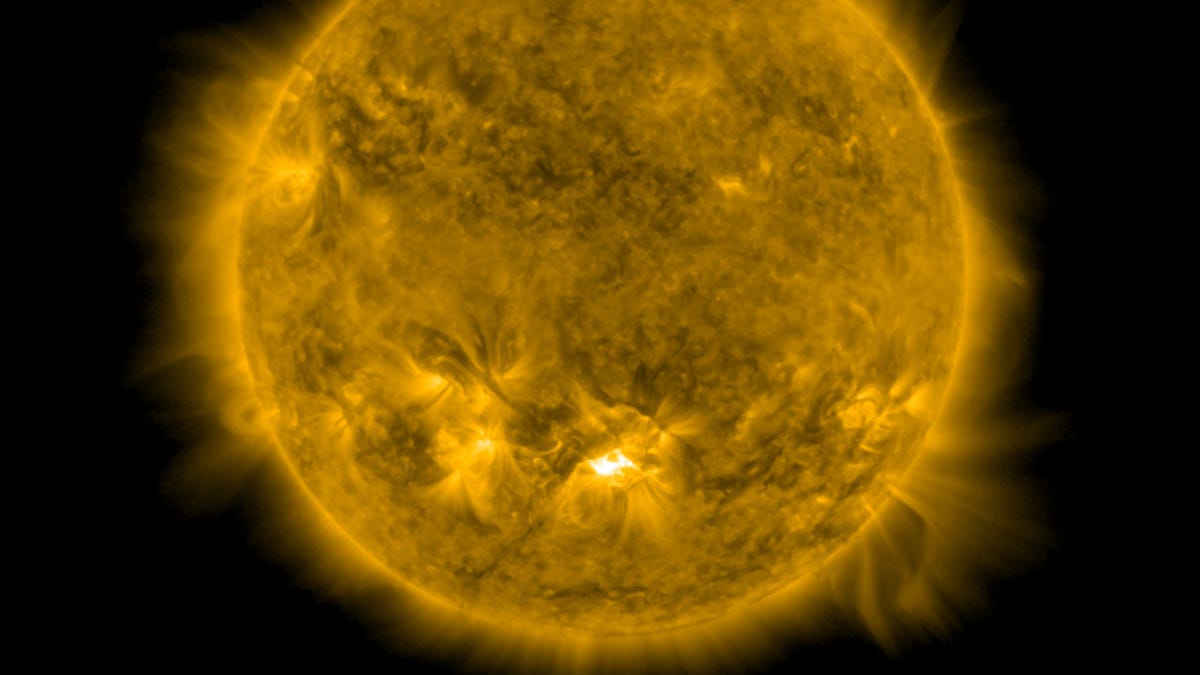Watch the sun spit out a whopper X1 solar flare
The sun had an outburst on Thursday, and it could feed into some impressive aurora action on Earth.
The sun is in a zesty mood right now. Our friendly neighborhood star fired off a major solar flare on Thursday and a National Oceanic and Atmospheric Administration satellite captured an excellent view.
NOAA's Cooperative Institute for Meteorological Satellite Studies at the University of Wisconsin-Madison tweeted two views of the flare popping off as seen in different wavelengths.
The #GOES16 Solar Ultraviolet Imager (SUVI) instrument captured a strong solar flare today, seen here in 2 wavelengths. Pretty cool, er -hot! Get @NWSSWPC SUVI data at https://t.co/9Z6HTdJnof @NOAASatellitePA pic.twitter.com/QY4BSWHAHt
— UW-Madison CIMSS (@UWCIMSS) October 28, 2021
NOAA's Space Weather Prediction Center logged the flare as an X1. Solar flares are measured in a similar way as earthquakes, with the biggest flares labeled as "X-class." The smallest flares are "A-class." Higher numbers denote more intense flares. NASA once measured an X28 in 2003, though an X1 is still a major flare.
Solar flares can have an impact on Earth. "Harmful radiation from a flare cannot pass through Earth's atmosphere to physically affect humans on the ground. However, when intense enough, they can disturb the atmosphere in the layer where GPS and communications signals travel," NASA said in a statement on Thursday.
NASA released a view of the flare as seen by its Solar Dynamics Observatory.
NASA's sun-watching Solar Dynamics Observatory captured this view of an X1 solar flare on Oct. 28.
Space weather physicist Tamitha Skov is tracking the flare and expects the associated solar storm to reach Earth in time for Halloween on Oct. 31. It could fuel some impressive aurora action, as we saw when a coronal mass ejection reached us earlier this month.
Stellar #Halloween X-Flare from our #Sun today! The dense filament within region 2887 launches as a strong #solarstorm (and #radiation storm) headed towards Earth! Impact likely Oct 31. Expect #aurora to mid-latitudes, #HFradio & #GPS issues. Waiting for coronagraphs for more! pic.twitter.com/q8o4TeO7u5
— Dr. Tamitha Skov (@TamithaSkov) October 28, 2021
It's been a busy October for the sun, and this latest outburst could add an additional festive element to Halloween as some areas of the globe may get to witness swirling, dancing auroral ghost lights in the sky. The North Dakota Dual Aurora Camera project will be keeping an eye on the potential action this weekend. It could be quite a visual treat.


